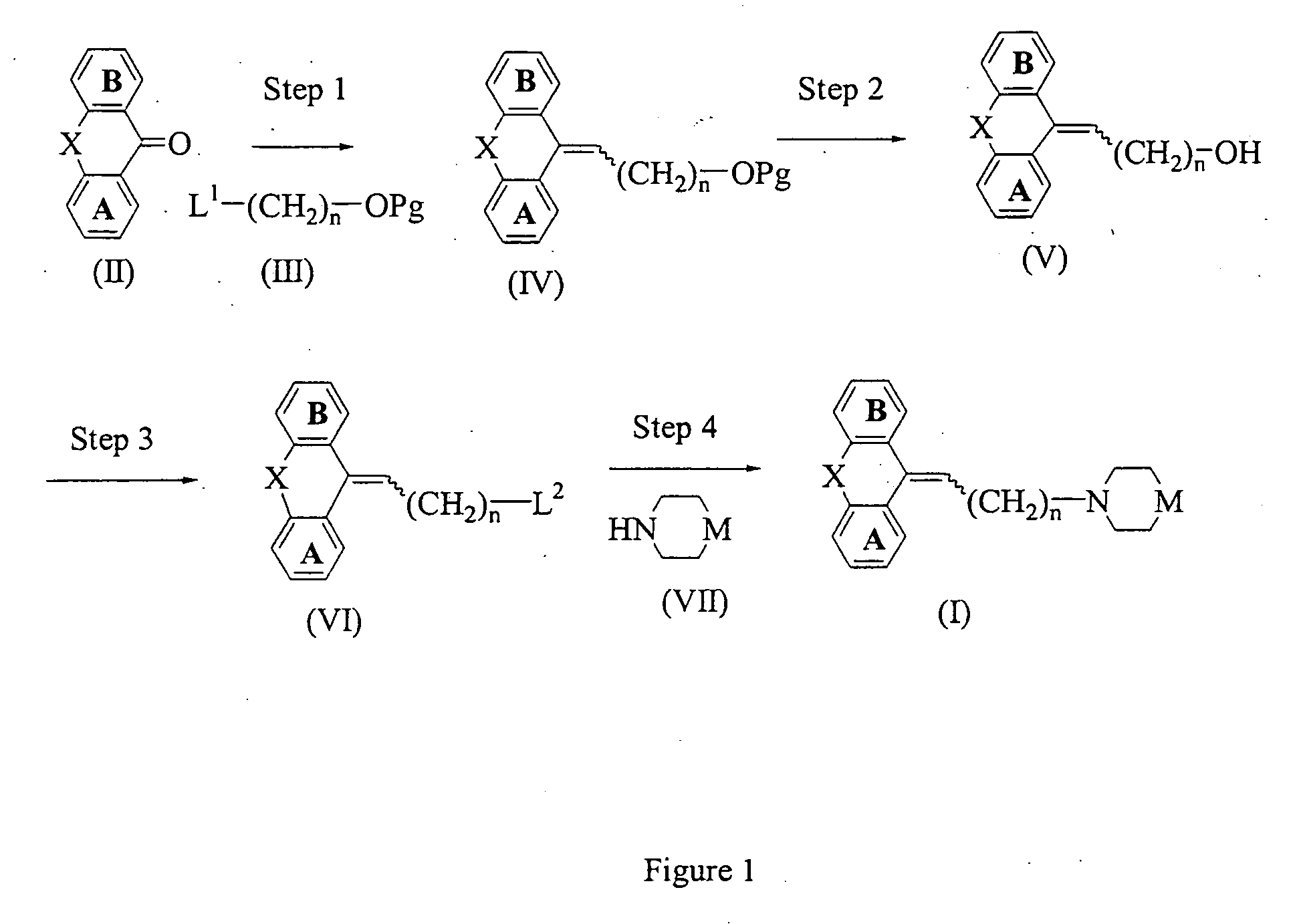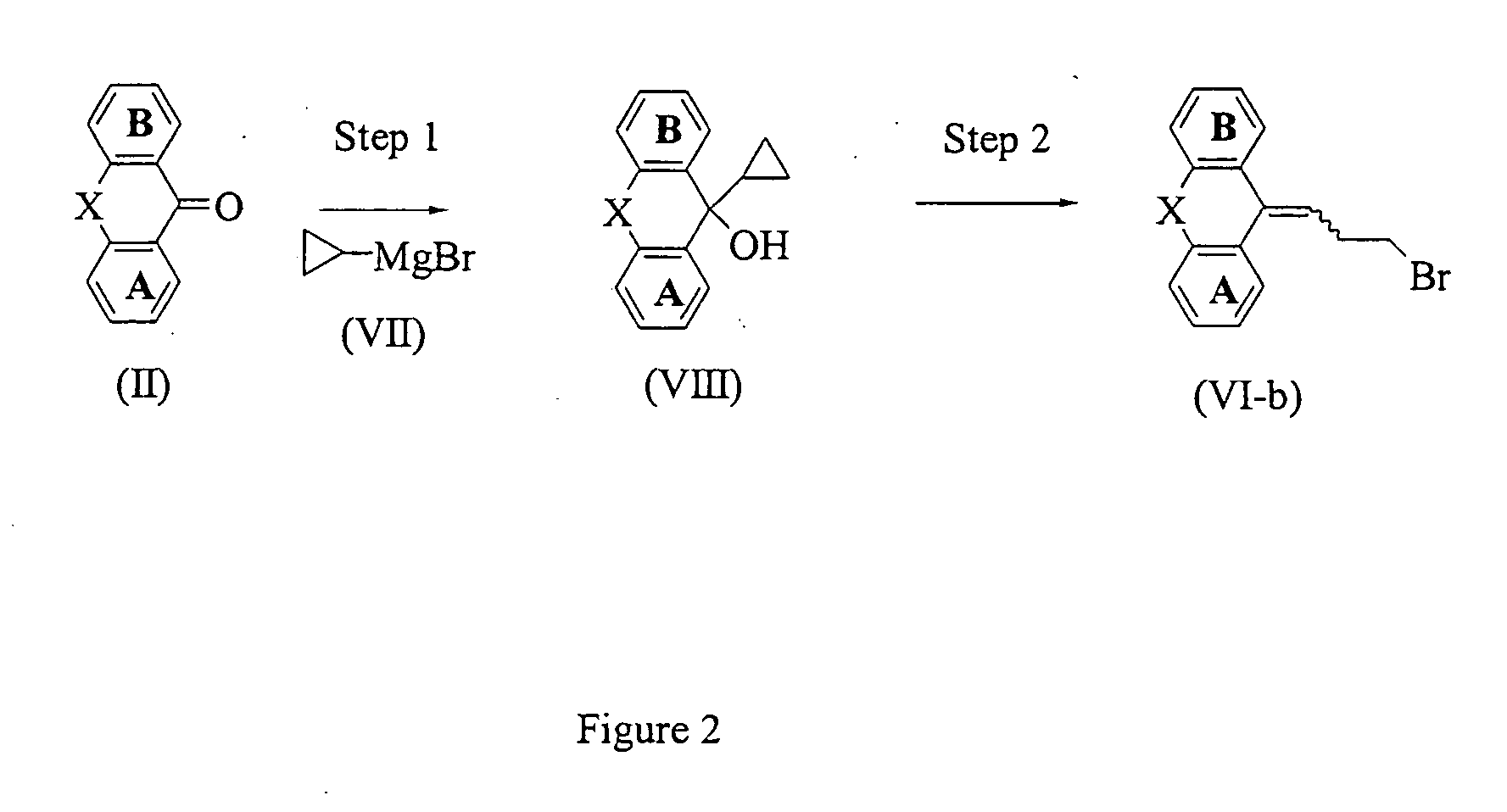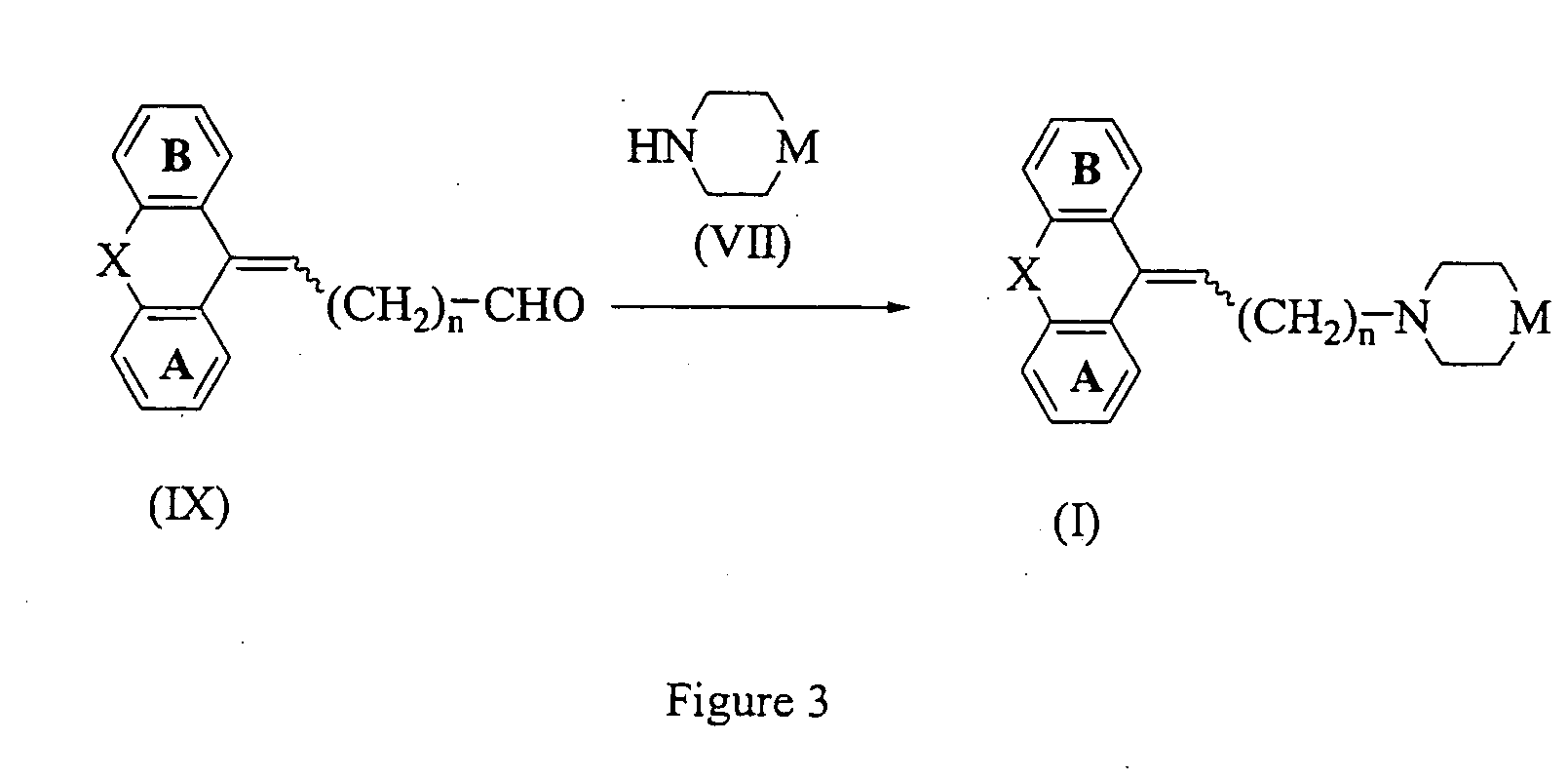Chemokine receptor antagonists and methods of use therefor
a technology of chemokine receptors and antagonists, which is applied in the field of chemokine receptor antagonists and methods of use therefor, can solve the problems that no successful antagonists have yet been developed to the receptors, and achieve the effects of inhibiting binding and/or activation, and inhibiting leukocyte activation and/or recruitmen
- Summary
- Abstract
- Description
- Claims
- Application Information
AI Technical Summary
Benefits of technology
Problems solved by technology
Method used
Image
Examples
example 1
4-(4-Chlorophenyl)-1-[3-(10,11-dihydro-5H-dibenzo[a,d]cycloheptene-5-ylidene)propyl]piperidin-4-ol
[0174] To a solution of 5-(3-bromopropylidene)-10,11-dihydro-5H-dibenzo[a,d]cycloheptene (described in JP 48-030064)(200 mg) in DMF (10 ml) were added 4-(4-chlorophenyl)-4-hydroxypiperidine (230 mg), potassium carbonate (360 mg), and potassium iodide (50 mg). The mixture was stirred at 70° C. for 24 hours. Water and ethyl acetate were added to the reaction mixture, the organic layer was separated and washed with saturated aqueous sodium chloride, and dried with magnesium sulfate. The solvent was distilled off under reduced pressure. The residue was purified by silica gel chromatography eluting with ethyl acetate-hexane (1:1) to give the titled compound (250 mg). 1H-NMR (CDCl3) d: 1.65-2.11(5H,m), 2.32-3.10(8H,m), 3.22-3.67(4H,m), 5.87(1H,t), 7.03-7.44(12H,m). MS m / z: 444(M+1).
example 2
4-(4-Chlorophenyl)-1-[3-(6,11-dihydrodibenz[b,e]oxepin-11-ylidene)propyl]piperidin-4-ol
[0175] The titled compound was prepared by following the procedure of Example 1, but replacing 5-(3-bromopropylidene)-10,11-dihydro-5H-dibenzo[a,d]cycloheptene with 11-(3-bromopropylidene)-6,11-dihydrodibenz[b,e]oxepine. 1H-NMR (CDCl3) d: 1.61-2.16(5H,m), 2.37-2.80(8H,m), 5.22(2H,brs), 5.70(0.6×1H,t), 6.03(0.4×1H,t), 6.73-6.90(2H,m), 7.09-7.45(10H,m). MS m / z: 446(M+1)
example 3
Membrane Preparations for Chemokine Binding and Binding Assays
[0176] Membranes were prepared from THP-1 cells (ATCC #TIB202). Cells were harvested by centrifugation, washed twice with PBS (phosphate-buffered saline), and the cell pellets were frozen at −70 to −85° C. The frozen pellet was thawed in ice-cold lysis buffer consisting of 5 mM HEPES (N-2-hydroxyethylpiperazine-N′-2-ethane-sulfonic acid) pH 7.5, 2 mM EDTA (ethylenediaminetetraacetic acid), 5 μg / ml each aprotinin, leupeptin, and chymostatin (protease inhibitors), and 100 μg / ml PMSF (phenyl methane sulfonyl fluoride—also a protease inhibitor), at a concentration of 1 to 5×107 cells / ml. This procedure results in cell lysis. The suspension was mixed well to resuspend all of the frozen cell pellet. Nuclei and cell debris were removed by centrifugation of 400×g for 10 minutes at 4° C. The supernatant was transferred to a fresh tube and the membrane fragments were collected by centrifugation at 25,000×g for 30 minutes at 4° C. ...
PUM
| Property | Measurement | Unit |
|---|---|---|
| enantiomeric excess | aaaaa | aaaaa |
| enantiomeric excess | aaaaa | aaaaa |
| temperature | aaaaa | aaaaa |
Abstract
Description
Claims
Application Information
 Login to View More
Login to View More - R&D
- Intellectual Property
- Life Sciences
- Materials
- Tech Scout
- Unparalleled Data Quality
- Higher Quality Content
- 60% Fewer Hallucinations
Browse by: Latest US Patents, China's latest patents, Technical Efficacy Thesaurus, Application Domain, Technology Topic, Popular Technical Reports.
© 2025 PatSnap. All rights reserved.Legal|Privacy policy|Modern Slavery Act Transparency Statement|Sitemap|About US| Contact US: help@patsnap.com



